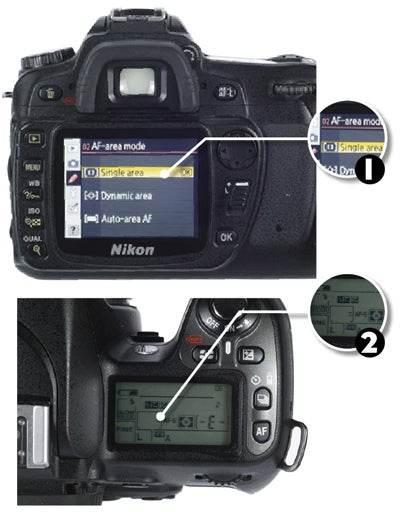Focusing is an integral part of any camera operation. Whether you are using a basic point-and-shoot model, or something that enables you to fine-tune your focusing, picking the right mode and getting the sharpness where you want it is the difference between a poor image and a stunning one. For many people, focusing is something that is regarded as a given, but, as with all photography techniques, it is not quite that straightforward. There are other things to bear in mind, not least the many creative ways in which focusing can be used to change a picture.
Focusing Modes in Your Camera
Most consumer digital cameras often have more than one focusing mode, but the two main ones are autofocus and manual focus.
1: In the Menu
Within the menu you can pick the focus mode you wish to use.
2: On the LCD
This screen allows you to pick the specific focus area via the toggle on the back of the camera
How Does Autofocus Work?
Autofocus is the mode on a camera that instructs the lens to focus on a subject. First, however, the camera has to collate enough information for it to be able to create a sharp image. It can also save time – compared to manual focusing – and ensure sharper images.
What this setting actually does is instruct a computer within the camera to run a motor that focuses the lens. Focusing is the moving of the lens elements until the sharpest possible image is achieved. Depending on the distance of the subject from the camera, the focusing elements have to be set a certain distance from the camera’s sensor to form a clear image.
A typical autofocus sensor uses a charge-coupled device (CCD). This provides input to algorithms (step-by-step guides to calculations) that compute the contrast of the actual picture elements. The CCD is typically a strip of 100-200 pixels, and, as the light from the scene penetrates this strip, the microprocessor analyses the values from each pixel assessing the difference in intensity among the adjacent pixels. If the scene is out of focus, adjacent pixels have very similar intensities. This being the case, the microprocessor will then move the lens elements to see whether the intensity between the adjacent pixels has got better or worse. The microprocessor will then search for the point where there is maximum intensity difference between adjacent pixels and decide on that as the best point of focus.
This method of focus must have light and subject contrast to do its job. If you try to take a picture of a blank wall, for example, the camera has no adjacent pixels to compare and, therefore won’t be able to focus.
Most types of autofocus look for contrast on horizontal areas of the AF points, but more cameras today have the ability to assess contrast on the horizontal and the vertical, known as ‘cross-type’ autofocus.




